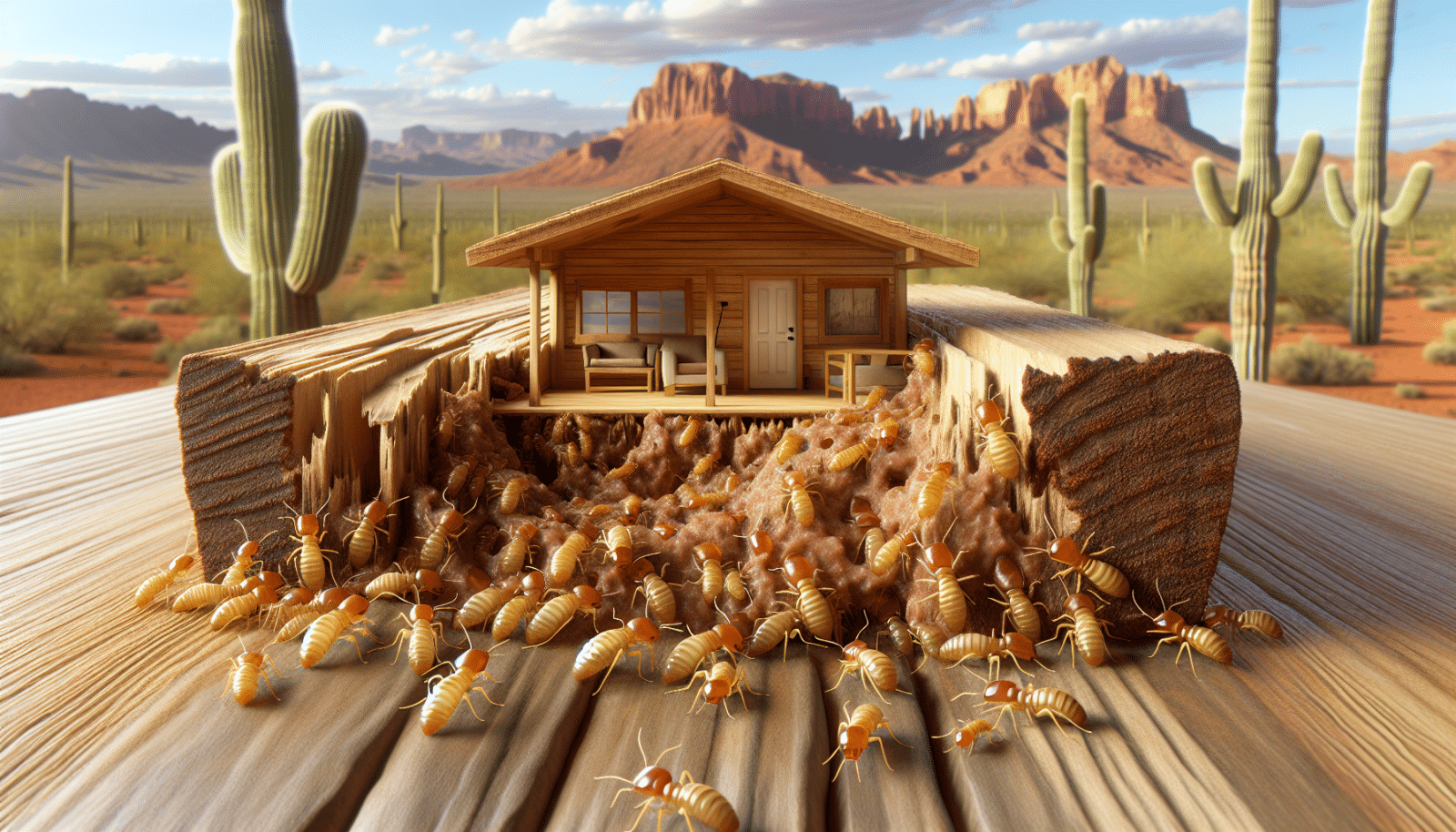Welcome to our blog! At Arizona Termite Control, we understand how distressing it can be to discover termite damage in your home. This comprehensive guide is crafted to walk you through the steps of repairing termite damage, ensuring your home is restored to its former glory. Whether you’re facing minor cosmetic damage or more significant structural issues, we’re here to help every homeowner tackle termite restoration efficiently.
Contents
Understanding Termite Damage
Before diving into repairs, it’s crucial to grasp the extent and type of termite damage your home has sustained. Termites primarily feed on wood, which can compromise the structural integrity of your house over time. Identifying the problem areas early can save you from more extensive and expensive repairs down the line. In this segment, we’ll discuss how to assess the damage and decide on the correct course of action.
Remember, not all termite damage is immediately visible. Sometimes, the most dangerous damage is hidden beneath the surface, silently weakening your home’s foundation and support structures. Regular Inspections by professionals can uncover these hidden threats before they escalate.
Stopping the Termite Infestation
Before any repair work can begin, the first step is always to stop the termite infestation in its tracks. This means getting in touch with professional termite exterminators who can assess the situation and apply the necessary treatments to eliminate the termites from your home. Eliminating the termites ensures that your repair efforts will not be in vain, as ongoing infestations can cause new damage.
It’s worth noting that termite extermination methods vary depending on the species and extent of the infestation. This might include soil treatments, bait systems, or direct wood treatments. Trusting professionals with this job is crucial, as they have the experience and tools to ensure the termites are gone for good.
Evaluating Structural Damage
Once the termites are dealt with, the next step is to evaluate any structural damage. This stage is critical as it determines the safety of your home and the necessary scope of repairs. A professional inspection can help you understand the severity of the damage and whether you need to involve structural engineers or contractors for major repairs.
Major structural damage may include compromised beams, load-bearing walls, or foundational supports. These are not only the most costly to repair but also the most dangerous to ignore. In cases of extensive damage, securing your home’s structure is the priority before any cosmetic repairs are done.
Preparing for Repairs
Preparation is key to a smooth repair process. This involves clearing the affected area of any furniture, flooring, or decorations and ensuring that you have the necessary permits for structural repairs, if required. Preparation also includes gathering the right tools and materials for the job, which can vary based on the extent of the damage and the type of repairs needed.
Additionally, it’s a good time to consider whether you’ll tackle the repairs yourself or hire professionals. While DIY can save money for minor fixes, professional contractors come with the expertise to handle more significant structural repairs safely and efficiently.
Selecting Repair Methods and Materials
The choice of repair methods and materials depends largely on the extent of the termite damage. For minor damage, wood hardeners and fillers might suffice, while significant damage could require the replacement of wooden beams or panels. It’s important to select materials that not only restore your home’s integrity and appearance but also provide some level of future termite resistance.
Today, many homeowners opt for treated wood or alternative materials like steel, which termites cannot digest. Making informed choices at this stage will not only ensure the durability of your repairs but also protect your home against future infestations.
Detailed Repair Steps
- Identify Specific Damage: Walk through your home with a keen eye, noting all areas affected by termite damage. It helps to take photographs for your records.
- Remove Damaged Wood: Carefully remove any wood that has been severely compromised by termite activity. This might require the use of power tools or manual tools depending on the location and extent of the damage.
- Treat Surrounding Wood: To prevent future infestations, treat the surrounding wood and areas with termite-resistant products. This can enhance the longevity of both the repairs and unaffected structures.
- Replace or Repair: Depending on the evaluation, replace severely damaged wood with new, termite-resistant materials, or repair minor damage with wood hardeners and fillers.
- Finish and Paint: Once repairs are complete, sand down any rough edges, apply a primer, and finish with paint or stain to match the existing areas. This not only restores the appearance of your home but also seals the wood against moisture and Pests.
Post-Repair Inspection
After completing repairs, it’s critical to have your home re-inspected to ensure that all termite damage has been addressed and that there are no signs of ongoing infestation. A professional inspection can provide peace of mind and certify that your home is safe and sound. This step is especially important for major structural repairs.
This is also a good time to discuss long-term Termite Prevention strategies with your pest control professional. Ensuring your home is protected against future infestations is just as important as repairing the existing damage.
Maintaining a Termite-Free Home
Prevention is always better than cure. Regularly inspecting your home for signs of termite activity can save you from the hassle and expense of future repairs. Consider implementing strategies like maintaining a dry foundation, avoiding wood-to-soil contact around your home, and storing firewood away from your house’s structure.
Additionally, annual inspections by a termite control professional can detect early signs of termite activity, preventing significant damage. Investing in preventive measures and staying vigilant are your best defenses against termites.
Seeking Professional Help
While some minor termite damage can be repaired with DIY efforts, significant structural damage requires professional expertise. Working with experienced contractors and termite control professionals ensures that repairs are done safely and effectively, protecting your home’s value and your family’s safety.
Don’t hesitate to reach out to Arizona Termite Control for assistance with inspecting, exterminating, and repairing termite damage. Our team is dedicated to providing top-notch service and peace of mind to homeowners throughout our service areas.
Conclusion
Repairing termite damage can be a daunting task, but with the right approach and professional support, your home can be restored to its original condition or even better. Remember, the key to managing termite damage is prompt action and preventive measures. If you suspect termite damage in your home, don’t wait—call us today at 480-660-3093 or Request a Free Inspection.




